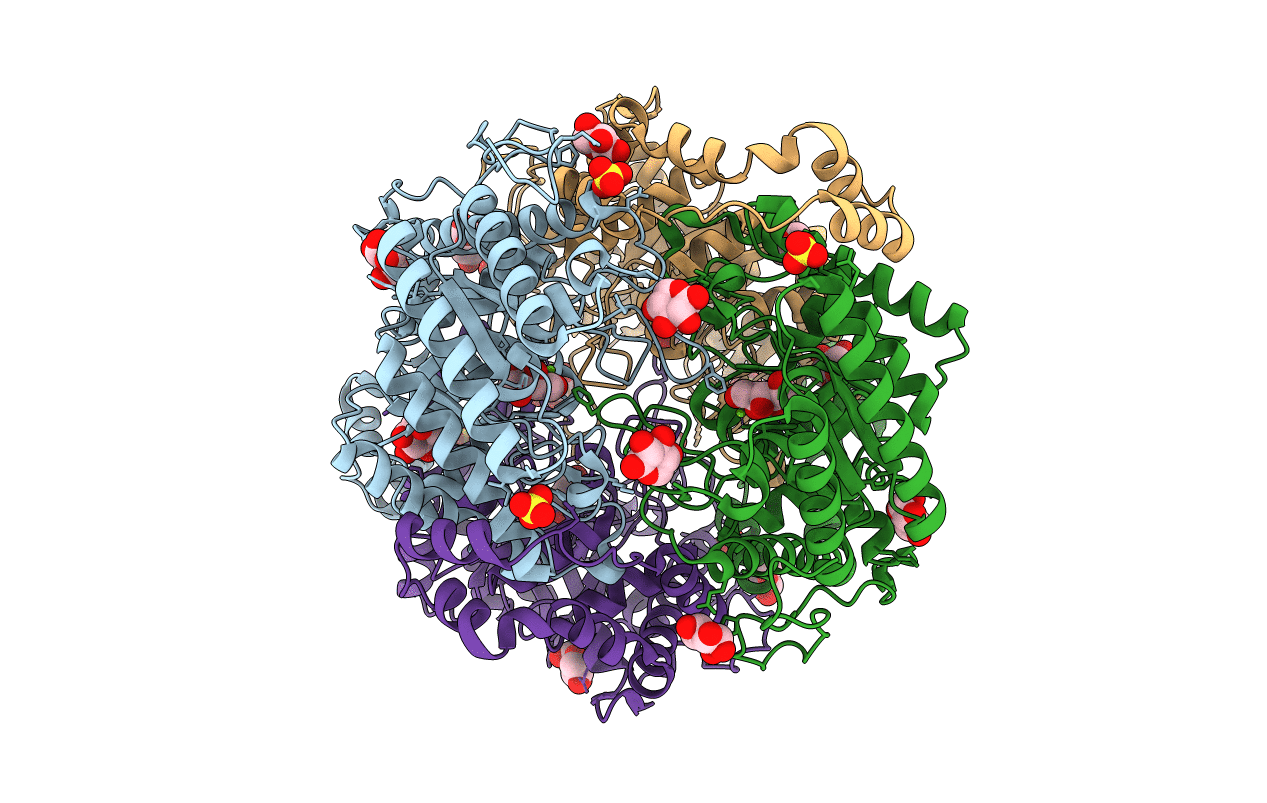
Deposition Date
2017-03-21
Release Date
2017-11-01
Last Version Date
2024-05-01
Entry Detail
PDB ID:
5NH7
Keywords:
Title:
Crystal structure of xylose isomerase from Piromyces E2 in complex with two Mg2+ ions and xylose
Biological Source:
Source Organism:
Piromyces sp. E2 (Taxon ID: 73868)
Host Organism:
Method Details:
Experimental Method:
Resolution:
1.90 Å
R-Value Free:
0.17
R-Value Work:
0.15
R-Value Observed:
0.15
Space Group:
P 1


